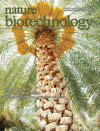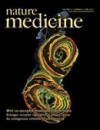 Monsanto acquired a stake in Sapphire Energy, a San Diego–based algae fuel company known for its prominent backers, including Bill Gates’s firm Cascade Investment, in Kirkland, Washington, and the Wellcome Trust, in London. Through the deal (figures were not disclosed), the St. Louis agriculture giant gains access to Sapphire’s expertise and technology for isolating algal traits that could be applied to agricultural genetic research. Continue reading Monsanto dips into algae
Monsanto acquired a stake in Sapphire Energy, a San Diego–based algae fuel company known for its prominent backers, including Bill Gates’s firm Cascade Investment, in Kirkland, Washington, and the Wellcome Trust, in London. Through the deal (figures were not disclosed), the St. Louis agriculture giant gains access to Sapphire’s expertise and technology for isolating algal traits that could be applied to agricultural genetic research. Continue reading Monsanto dips into algae
All posts by LL
On thirtieth anniversary, calls for HIV cure research intensify
 Thirty years ago this month, scientists first reported the existence of AIDS, and in the intervening decades researchers have focused steady efforts on prevention, long-term treatments such as antiretroviral drugs, and patient care. What has fallen in and out of fashion during that time is seeking a ‘cure’ for HIV. That changed when scientists reported that they had cured one man of the virus through a bone marrow transplant (Blood 117, 2791–2799, 2011). But the circumstances of that 2007 transplant were unique, and researchers say they are uncertain about how to fund additional cure-directed research without cannibalizing other components of the global HIV/AIDS research machine. Continue reading On thirtieth anniversary, calls for HIV cure research intensify
Thirty years ago this month, scientists first reported the existence of AIDS, and in the intervening decades researchers have focused steady efforts on prevention, long-term treatments such as antiretroviral drugs, and patient care. What has fallen in and out of fashion during that time is seeking a ‘cure’ for HIV. That changed when scientists reported that they had cured one man of the virus through a bone marrow transplant (Blood 117, 2791–2799, 2011). But the circumstances of that 2007 transplant were unique, and researchers say they are uncertain about how to fund additional cure-directed research without cannibalizing other components of the global HIV/AIDS research machine. Continue reading On thirtieth anniversary, calls for HIV cure research intensify
Sounding out cancer cells
 A device that filters cancer cells from human blood using sound could help to identify tumour cells that have spread.
A device that filters cancer cells from human blood using sound could help to identify tumour cells that have spread.
Finding tumour cells in the blood indicates a cancer has metastasised – but the molecular markers that are used to identify the cells can modify them and make them unsuitable for studying how treatment is proceeding and for performing basic cancer research.
So Itziar González at the Institute for Acoustics in Madrid, Spain, and colleagues developed an alternative: a tiny vibrating plastic chamber through which a blood sample flows. The vibrations create a standing wave that deflects cells in the blood to a different degree depending on their size. Tumour cells are often larger than blood cells and so collect in a different region of the device. The process does not alter the cells. Continue reading Sounding out cancer cells
Optical Fiber Watches Wounds
 Monitoring a wound as it heals should get easier thanks to a new kind of optical fiber that could become a part of everyday bandages. The fiber’s coating alters in color in response to changes in acidity, a key health indicator in wounds. The core of the fiber carries light to and from an attached device, which caregivers could use to monitor a wound in real time, says Bastien Schyrr, a Ph.D. student in biomedical engineering at the University of Fribourg, in Switzerland, who last month presented results of a laboratory trial in which the enhanced bandage detected acidity changes in a solution containing human serum. Continue reading Optical Fiber Watches Wounds
Monitoring a wound as it heals should get easier thanks to a new kind of optical fiber that could become a part of everyday bandages. The fiber’s coating alters in color in response to changes in acidity, a key health indicator in wounds. The core of the fiber carries light to and from an attached device, which caregivers could use to monitor a wound in real time, says Bastien Schyrr, a Ph.D. student in biomedical engineering at the University of Fribourg, in Switzerland, who last month presented results of a laboratory trial in which the enhanced bandage detected acidity changes in a solution containing human serum. Continue reading Optical Fiber Watches Wounds